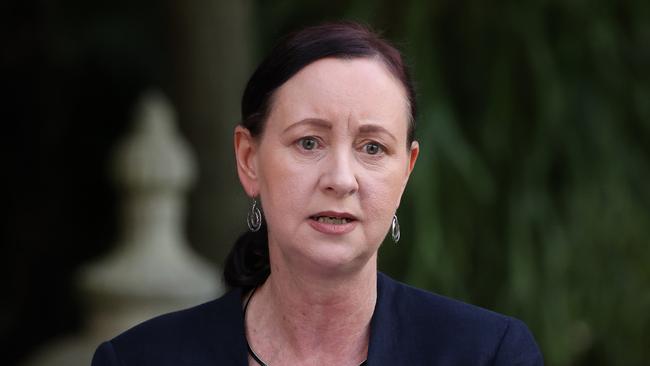Queensland Ambulance paramedics’ struggle revealed in Right to Information release
Paramedics sleeping at stations, patients waiting almost 11 hours, officers so tired they require a “welfare check” – welcome to Queensland’s ambulance anarchy.
QLD Politics
Don't miss out on the headlines from QLD Politics. Followed categories will be added to My News.
Exhausted paramedics have been stood down from shifts due to fatigue, left to sleep at their station and forced to use personal cars due to an ambulance shortage as Queenslanders wait hours for assistance, documents reveal.
An almost 1000-page Right to Information dossier has revealed significant incidents of ramping and patients waiting almost 11 hours for an ambulance as Queensland Ambulance Service paramedics struggle to keep up with demand.
QAS station operations briefs, released to the Opposition through a Right to Information request, detail significant challenges at Southport where patients faced significant delays for several days.

A shift report for October 3 reveals 30 code 2A patients were waiting for an ambulance, the longest for 10.5 hours.
The dossier reveals several incidents where paramedics were told to expect delays due to ramping at hospitals, leaving patients waiting several hours for assistance.
On several occasions paramedics were stood down from their shift due to fatigue, and one incident noted a “welfare check” was done on a tired officer who needed to sleep at the station before driving home.
It comes as quarterly hospital performance figures for the October to December quarter revealed little change, with 74 per cent of patients seen within clinically-recommended time frames – a one per cent drop on the previous quarter.
Statewide emergency department presentations rose 9 per cent to 640,258 during the final quarter of last year.
Logan has the highest rate of ambulance ramping in southeast Queensland, with 55 per cent of ambulances left waiting outside hospitals.
In the Redlands ramping has increased 18 per cent on the previous quarter, with one in two now ramped.

Opposition Leader David Crisafulli said the state government had failed to address problems within Queensland Health despite acknowledging there was a problem.
“These shocking figures show the extent of the Queensland Health crisis right across the state,” he said.
“It shows the state government and the health minister aren’t listening to staff and patients on how to fix the Queensland Health crisis.”
Mr Crisafulli called for an overhaul of the culture within the department, declaring doctors, nurses and paramedics were left “holding our hospitals together”.
“The frontline staff want to take control back from Queensland Health, they want better resources, they want data shared in real time, they want to drive cultural change so that an ambulance doesn’t have to wait at the end of a ramp,” he said.

Health Minister Yvette D’Ath said Queensland hospitals “performed admirably” in the December quarter in the face of unprecedented demand.
“In the December quarter, 640,000 people presented to an emergency department with 100 per cent of the most urgent Category 1 patients seen on time, within two minutes,” she said.
“Despite a temporary suspension of elective surgery, 90 per cent of elective surgery patients were treated within the clinically recommended time.
“This is a testament to the excellent planning and preparation Queensland Health undertook to manage its caseload while also managing the pandemic.”



